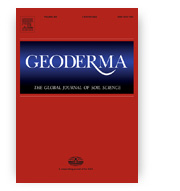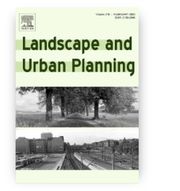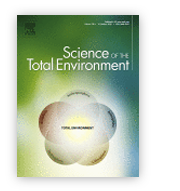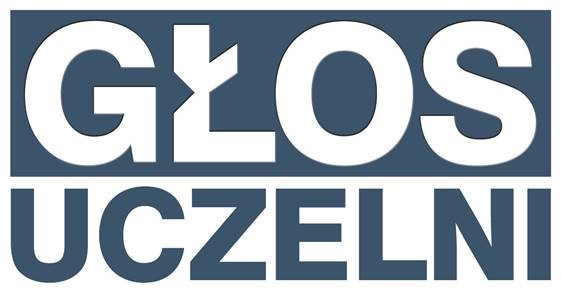
Research papers of the month – October 2022
We present the highest-score research papers of October 2022. These papers have ben published in journals with the highest Ministerial score – 200 points.
Glossic planosols in the postglacial landscape of central europe: Modern polygenetic soils or subaerial palaeosols?
Cezary Kabała, Elżbieta Musztyfaga, Zdzisław Jary, Jarosław Waroszewski, Bernard Gałka, Mirosław Kobierski
Geoderma
Ministerial score = 200.0
Journal Impact Factor (2022) = 7.422 (Q1)
 Texturally bipartite and stagno-gleyed Planosols are becoming more commonly reported from the temperate climate zone. Although ferrolysis is widely accepted as the major process responsible for abrupt textural change in South American Planosols, clay illuviation or native lithogenic discontinuity is understood to be more important for texturally distinct profile differentiation in other regions of the world. Textural discontinuities, accompanied by seasonal water stagnation, are common in the (post)glacial landscapes of Central and Northern Europe, and extend the possibility for Planosol recognition, which has previously been considered atypical of this region. However, a unique combination of lithogenic, periglacial and pedological features has raised questions about the classification and genesis of these soils. In particular, an Eemian age for the illuvial clay (argic) horizon in loamy subsoils developed from pre-Vistulian ice-sheets has been hypothesised. Eight texturally bipartite soil profiles (sandy over loamy), located within the range of the older Saalian ice-sheet (Polish: Odra) were inves- tigated from the Lower Silesia region (SW Poland). Abrupt changes in the relative contributions of particle size fractions, heavy minerals, rare-earth elements, rounded and semi-rounded sand grains, and clay minerals, as well as the presence of wind-polished periglacial pavements, accompanied by Late Pleistocene–Holocene optically stimulated luminescence ages for the cover sands, have confirmed the different lithogeneses of the topsoil and subsoil layers as the reason for the abrupt textural difference in the soil profiles. Macro- and micromorphological observations support the following model of Glossic Planosol development in SW Poland: (a) formation of illuvial soil (Luvisol type), including its argic horizon, during the Eemian; (b) truncation of profile (erosion of eluvial horizons) during the cold stages of the Last Glacial Maximum, followed by the formation of a periglacial pavement, soil cracking and the cryogenic reworking of the illuvial structures in the argic horizon (Marine Isotope Stage [MIS] 4–MIS 2); and (c) soil burial with wind-transported sands (during MIS 2, remodelling in the Holocene), which formed a lithological discontinuity at the top of argic horizon. During the Holocene period, the upper argic horizon has been transformed by extending the albeluvic tonguing under a humid temperate climate. Observations from SW Poland support the hypothesis that Luvic/Glossic Planosols in the older (post)glacial landscapes are polygenetic soils, in terms of both their litho- and pedogeneses, the formation of which started in the Eemian and is still active
Texturally bipartite and stagno-gleyed Planosols are becoming more commonly reported from the temperate climate zone. Although ferrolysis is widely accepted as the major process responsible for abrupt textural change in South American Planosols, clay illuviation or native lithogenic discontinuity is understood to be more important for texturally distinct profile differentiation in other regions of the world. Textural discontinuities, accompanied by seasonal water stagnation, are common in the (post)glacial landscapes of Central and Northern Europe, and extend the possibility for Planosol recognition, which has previously been considered atypical of this region. However, a unique combination of lithogenic, periglacial and pedological features has raised questions about the classification and genesis of these soils. In particular, an Eemian age for the illuvial clay (argic) horizon in loamy subsoils developed from pre-Vistulian ice-sheets has been hypothesised. Eight texturally bipartite soil profiles (sandy over loamy), located within the range of the older Saalian ice-sheet (Polish: Odra) were inves- tigated from the Lower Silesia region (SW Poland). Abrupt changes in the relative contributions of particle size fractions, heavy minerals, rare-earth elements, rounded and semi-rounded sand grains, and clay minerals, as well as the presence of wind-polished periglacial pavements, accompanied by Late Pleistocene–Holocene optically stimulated luminescence ages for the cover sands, have confirmed the different lithogeneses of the topsoil and subsoil layers as the reason for the abrupt textural difference in the soil profiles. Macro- and micromorphological observations support the following model of Glossic Planosol development in SW Poland: (a) formation of illuvial soil (Luvisol type), including its argic horizon, during the Eemian; (b) truncation of profile (erosion of eluvial horizons) during the cold stages of the Last Glacial Maximum, followed by the formation of a periglacial pavement, soil cracking and the cryogenic reworking of the illuvial structures in the argic horizon (Marine Isotope Stage [MIS] 4–MIS 2); and (c) soil burial with wind-transported sands (during MIS 2, remodelling in the Holocene), which formed a lithological discontinuity at the top of argic horizon. During the Holocene period, the upper argic horizon has been transformed by extending the albeluvic tonguing under a humid temperate climate. Observations from SW Poland support the hypothesis that Luvic/Glossic Planosols in the older (post)glacial landscapes are polygenetic soils, in terms of both their litho- and pedogeneses, the formation of which started in the Eemian and is still active
DOI:10.1016/j.geoderma.2022.116101
Assessing food self-sufficiency of selected European Functional Urban Areas vs metropolitan areas
Marta Sylla, Małgorzata Świąder, José Luis Vicente-Vicente, Gustavo Arciniegas, Dirk Wascher
Landscape and Urban Planning
Ministerial score = 200.0
Journal Impact Factor (2022) = 8.119 (Q1)
 The resilience of the local food system is being underlined as one of the most important strategic goals for a sustainable future. However, since the question of what constitutes the local scale of food production depends largely on the type of product and supply chain, the associated foodshed can range from a site scale, city and city region up to wider region and country level. As a proof of concept whether functional urban areas (FUAs) can serve as references for local food systems, we provide evidence on their capacity to provide vegetarian diet supply to their residents. Applying the Metropolitan Foodshed and Self-Sufficiency Scenario (MFSS) model methodology we estimate the level of potential food self-sufficiency of the FUAs. We quantitatively compare the results for FUAs with the results of local planning documents of metropolitan areas. The approach is applied to 9 city regions representing different European countries: Wrocław (PL), Ostend (BE), Berlin (DE), Avignon (FR), Copenhagen (DK), Bari (IT), Brasov (RO), Athens (EL), Barcelona (ES). The results show that vegetarian and local food demand could be satisfied in first five FUAs of these city regions. However, if the same number of calories as current diet delivers is to be maintained only the first three FUAs have enough agricultural land to supply vegetarian ingredients to this diet. The results for metropolitan comparison return the same three cities plus Bari. We discuss the use of FUA in defining foodshed area and the role of consumers’ dietary choices in regional food self-sufficiency.
The resilience of the local food system is being underlined as one of the most important strategic goals for a sustainable future. However, since the question of what constitutes the local scale of food production depends largely on the type of product and supply chain, the associated foodshed can range from a site scale, city and city region up to wider region and country level. As a proof of concept whether functional urban areas (FUAs) can serve as references for local food systems, we provide evidence on their capacity to provide vegetarian diet supply to their residents. Applying the Metropolitan Foodshed and Self-Sufficiency Scenario (MFSS) model methodology we estimate the level of potential food self-sufficiency of the FUAs. We quantitatively compare the results for FUAs with the results of local planning documents of metropolitan areas. The approach is applied to 9 city regions representing different European countries: Wrocław (PL), Ostend (BE), Berlin (DE), Avignon (FR), Copenhagen (DK), Bari (IT), Brasov (RO), Athens (EL), Barcelona (ES). The results show that vegetarian and local food demand could be satisfied in first five FUAs of these city regions. However, if the same number of calories as current diet delivers is to be maintained only the first three FUAs have enough agricultural land to supply vegetarian ingredients to this diet. The results for metropolitan comparison return the same three cities plus Bari. We discuss the use of FUA in defining foodshed area and the role of consumers’ dietary choices in regional food self-sufficiency.
DOI:10.1016/j.geoderma.2022.116101
Production of PETase by engineered Yarrowia lipolytica for efficient poly (ethylene terephthalate) biodegradation
Katarzyna Kosiorowska; Antonio D. Moreno; Raquel Iglesias; Karol Leluk; Aleksandra Mirończuk
Science of the Total Environment
Ministerial score = 200.0
Journal Impact Factor (2022) = 10.753 (Q1)
 There has been a growing interest in poly(ethylene terephthalate) PET degradation studies in the last few years due to its widespread use and large-scale plastic waste accumulation in the environment. One of the most promising enzymatic methods in the context of PET degradation is the use of PETase from Ideonella sakaiensis, which has been reported to be an efficient enzyme for hydrolysing ester bonds in PET. In our study, we expressed a codon-optimized PETase gene in the yeast Yarrowia lipolytica. The obtained strain was tested for its ability to degrade PET directly in culture, and a screening of different supplements that might raise the level of PET hydrolysis was performed. We also carried out long-term cultures with PET film, the surface of which was examined by scanning electron microscopy. The efficiency of PET degradation was tested based on the concentration of degradation products released, and the results showed that supplementation of the culture with olive oil resulted in 66 % higher release of terephthalic acid into the medium compared to the mutant culture without supplementation. The results indicate the possibility of ethylene glycol uptake by both strains, and, additionally, the PETase produced by the newly engineered strain hydrolyses MHET. The structure of the PET film after culture with the modified strain, meanwhile, had numerous surface defects, cracks, and deformations.
There has been a growing interest in poly(ethylene terephthalate) PET degradation studies in the last few years due to its widespread use and large-scale plastic waste accumulation in the environment. One of the most promising enzymatic methods in the context of PET degradation is the use of PETase from Ideonella sakaiensis, which has been reported to be an efficient enzyme for hydrolysing ester bonds in PET. In our study, we expressed a codon-optimized PETase gene in the yeast Yarrowia lipolytica. The obtained strain was tested for its ability to degrade PET directly in culture, and a screening of different supplements that might raise the level of PET hydrolysis was performed. We also carried out long-term cultures with PET film, the surface of which was examined by scanning electron microscopy. The efficiency of PET degradation was tested based on the concentration of degradation products released, and the results showed that supplementation of the culture with olive oil resulted in 66 % higher release of terephthalic acid into the medium compared to the mutant culture without supplementation. The results indicate the possibility of ethylene glycol uptake by both strains, and, additionally, the PETase produced by the newly engineered strain hydrolyses MHET. The structure of the PET film after culture with the modified strain, meanwhile, had numerous surface defects, cracks, and deformations.
DOI:10.1016/j.scitotenv.2022.157358










